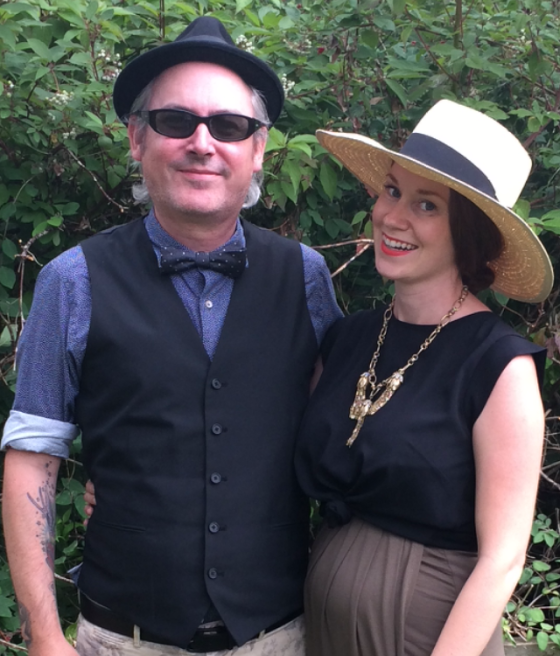Two of my three children were born left-handed – we don’t know what hand their baby sister will favour. What this means is that they tend to prefer doing most manual tasks with their left hand, more so than their right. They write, for instance, with their left hand, drink with their left hand, play sports favouring their left hand and foot, and punch much much harder with their left hand.
About 10% of the world is left-handed, although many can do a lot with both hands. This number is said to be increasing, and lefties as a group historically have produced an above-average number of high achievers. Many scientists agree, however, that there is little evidence that there is a difference in intelligence between right and left-handed people in general.
I’m teaching my left-handed kids to play right-handed guitar. In fact, you could say I’m flat out forcing them to play right-handed guitar. Why? Economics, for the most part.
Being a professional (right-handed) guitarist in the band Sloan, I have amassed a collection (12-14) of guitars. So I have enough, and don’t see the point in starting a whole new collection of left-handed guitars, which are generally harder to find and more expensive.
Now, before you go pointing fingers calling me a me “sidist,” consider that guitars are one of the only instruments made specifically for either lefties or righties. Nearly every other instrument is made in one style, and not necessarily because 90% of the world is right-handed. For instance, it is possible to buy a left-handed piano, but I’ve never seen one.
The guitar was historically made with the neck pointing to the left because the guitar was picked by the fingers on the right hand, and fretted by the fingers on the left. Much like a piano, both hands were put to work almost equally. By the 20th century, strumming had become popular, so the dominant rhythmic hand was the one strumming. That meant that, if you were right-handed, you would strum with your right hand.
Jimi Hendrix is perhaps the most famous left-handed guitarist, taking a regular right-handed guitar and simply turning it upside down and restringing it to suit. Other notable left-handed players are Black Sabbath’s Tony Iommi, Paul McCartney, Iggy Pop, and Justin Bieber.
You might think that I have left off (get it?) one of the most famous left-handed guitarists, Nirvana’s Kurt Cobain. Cobain was an interesting player because he was actually right-handed, but played left-handed guitar. When he was growing up, the only guitar in his home was left-handed, and so that’s what he learned on. He wrote and played drums with his right hand. In fact Hendrix was also right-handed, and could actually play both right and left, but playing lefty certainly helped him to stand out.
To back me up I compiled a list for my kids of lefties who play right-handed: B.B. King, David Bowie, Noel Gallagher, Joan Jett, Joe Perry, Paul Simon, Billy Corgan, and Mark Knopfler. They claim to have never heard of any of them.
So, for the most part, I’m being frugal, more than cruel. I have some pretty nice guitars, and although my kids aren’t allowed to touch any of those, I also have some work-horse guitars that I don’t mind getting a few greasy chip finger prints on every now and again. They mix well with the beer stains and cigarette burns (not from me – I quit that habit many years ago).
I have even bought them a “short-scale” Squire stratocaster, which is basically a smaller version of a regular electric guitar, and fully functional. It sounds great, especially through my Marshall micro-stack, which is – you guessed it – a small version of a regular Marshall stack. It’s all kid-sized, and conducive to small hands (8 and 11-years-old respectively) making big noises.
So far, protests have been minimal, although constantly showing them how to hold, strum, fret, and pick the damn thing has been a challenge. As for their “playing,” that has been limited to wildly strumming all the strings at the same time, with very little attention played to melody. Or neighbours.



